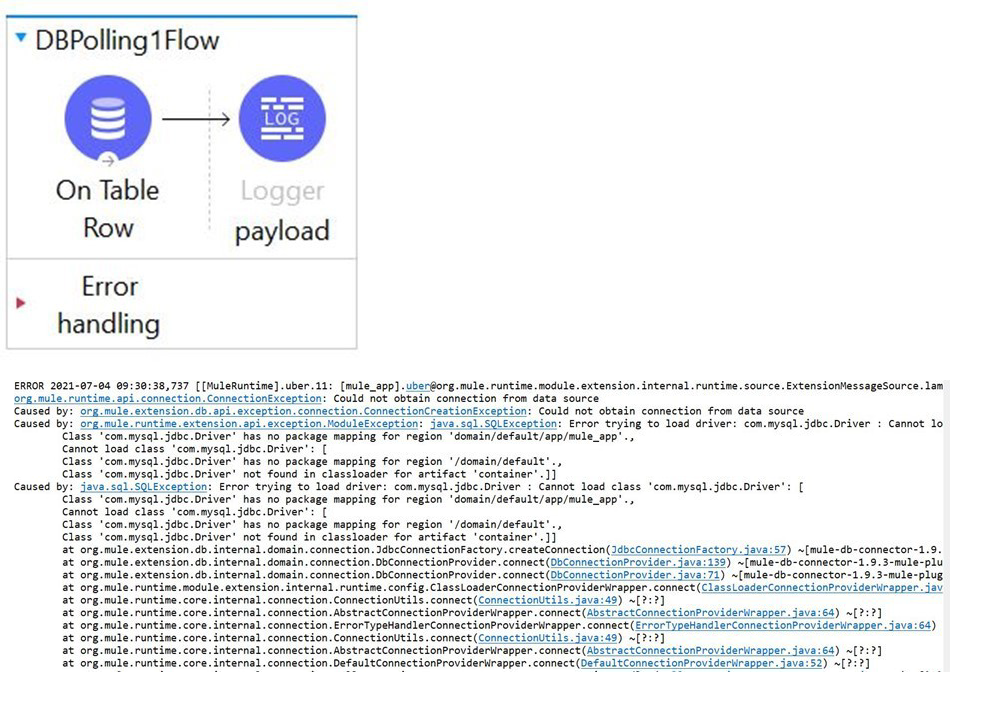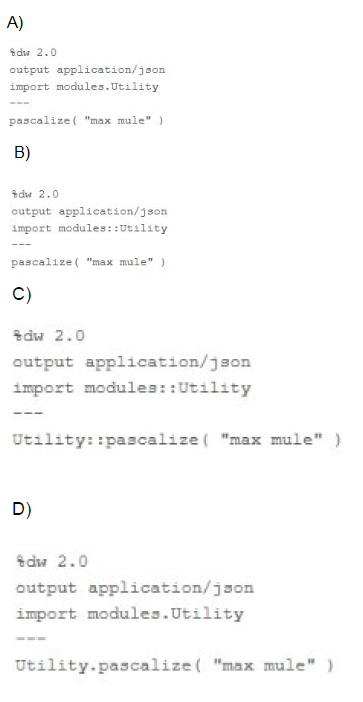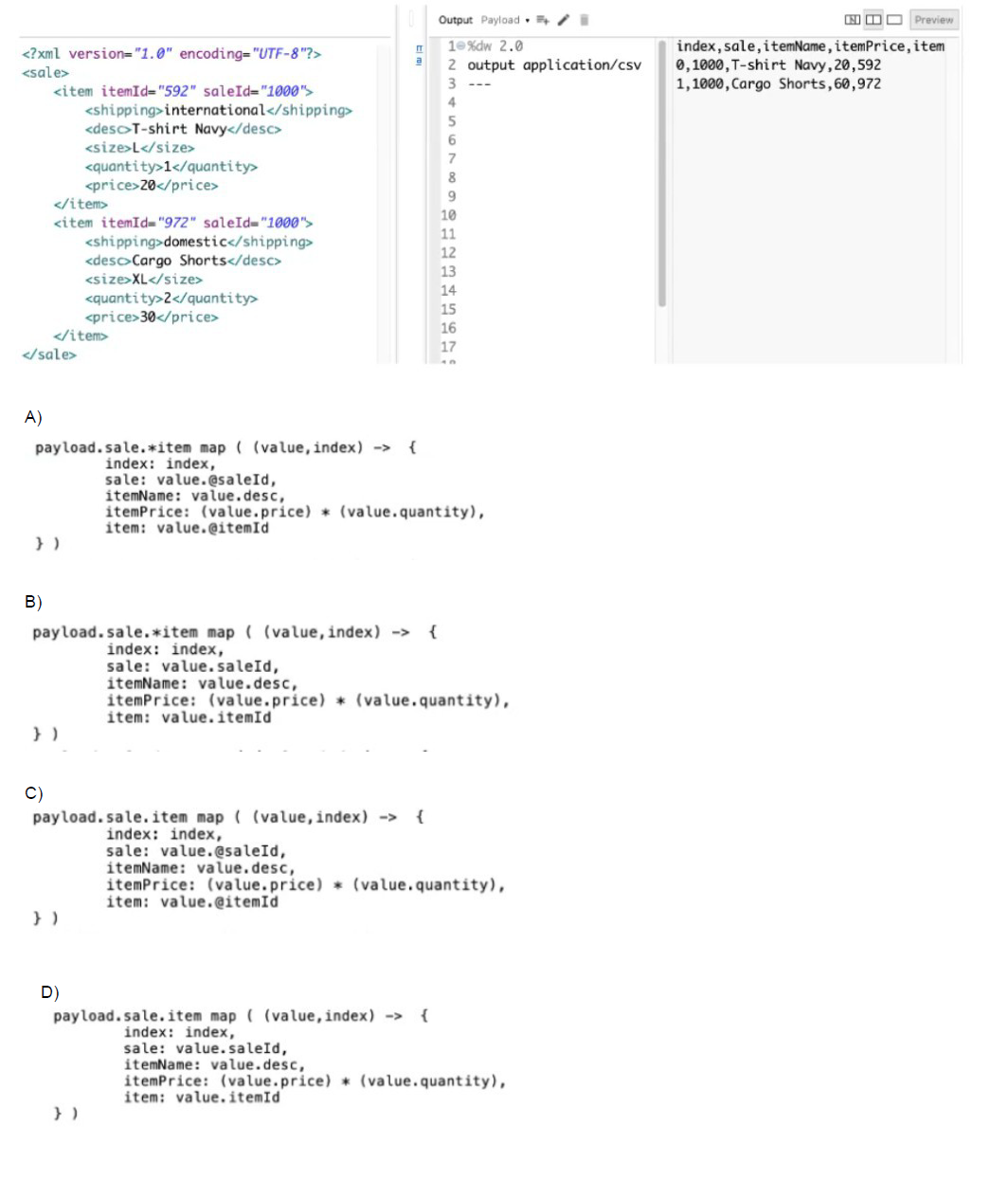
- Email support@dumps4free.com

What happens to the attributes of a Mule event in a flow after an outbound HTTP Request is made?
A. Attributes are replaced with new attributes from the HTTP Request response (which might be null)
B. New attributes may be added from the HTTP response headers, but no headers are ever removed
C. Attributes do not change
D. Previous attributes are passed unchanged
Explanation: Attributes are replaced with new attributes from the HTTP Request response. Attributes include everything apart from Payload/body. For ex: Headers, query parameters, URI parameters. So, when outbound HTTP request is made, new attributes need to pass the outbound HTTP request and old attributes are replaced.
Refer to the exhibits.

As a mulesoft developer, what you would change in Database connector configuration to resolve this error?
A. Configure the correct host URL
B. Configure the correct database name
C. Configure the correct table name
D. Configure the correct JDBC driver
Explanation:
Correct answer is Configure the correct JDBC driver as error message suggests the same Caused by: java.sql.SQLException: Error trying to load driver: com.mysql.jdbc.Driver : Cannot load class 'com.mysql.jdbc.Driver': [
Class 'com.mysql.jdbc.Driver' has no package mapping for region 'domain/default/app/mule_app'.,
Cannot load class 'com.mysql.jdbc.Driver': [
What HTTP method in a RESTful web service is typically used to completely replace an existing resource?
A. GET
B. PATCH
C. PUT
D. POST
Explanation: PUT replaces the original version of the resource, whereas the PATCH method supplies a set of instructions to modify the resource.
A Utility.dwl file is located in a Mule project at src/main/resources/modules. The Utility.dwl hie defines a function named pascalize that reformats strings to pascal case.
What is the correct DataWeave to call the pascalize function in a Transform Message component?

A. Option A
B. Option B
C. Option C
D. Option D
What DataWeave expression transforms the example XML input to the CSV output?

A. Option A
B. Option B
C. Option C
D. Option D
Explanation:
Correct answer is as below. Attributes in the incoming xml payload are always accessed using @.Similarly *item is required as we have multiple items in the request %dw 2.0 output application/csv
---
payload.sale.*item map ((value, index) -> { index: index,
sale: value.@saleId, itemName: value.desc,
itemPrice: (value.quantity) * (value.price), item: value.@itemId
} )
| Page 3 out of 47 Pages |
| Previous |